Films from the country "iran", sorted by revenue
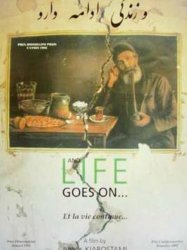
Life, and Nothing More… (1992)
, 1h31Directed by Abbas Kiarostami
Origin Iran
Genres Drama, Adventure
Themes Films about films, Documentary films about historical events, Disaster films
A film director and his son start a journey towards Koker, where approximately half of Where is My Friend's House? took place. During the first half, they search for a highway to the village, as most of the roads have been damaged or blocked by a severe earthquake two years prior; meanwhile, the two cross paths with several locals (who were also witnesses of the earthquake) and often ask directions.
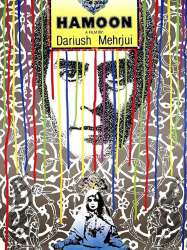
Hamoon (1990)
, 2h2Directed by Dariush Mehrjui
Origin Iran
Genres Drama
Actors Khosrow Shakibai, Bita Farrahi, Ezatollah Entezami
Hamid Hamoun who is an executive at a leading import-export firm lives with his wife Mahshid who is a budding artist in abstract painting. Mahshid hails from a rich family but marries the middle class Hamoun after falling for his intellectual tastes and forward views. After 7 years of marriage Mahshid who once was very much in love with Hamoun soon sees him as a constricting force against her desire to do something meaningful with her life. Hamoun who wishes to pursue a career as a writer while simultaneously preparing for his PhD thesis, occasionally takes out his frustration at his wife. Mahshid soon demands divorce from him. Hamoun is shocked to find out that his wife loves him no more. The story then depicts Hamoun's incapability to deal with the reality of losing his wife and living with his unfulfilled dreams. The subsequent scenes portray Hamoun's realisations coupled with dreamlike sequences resembling those from some of Fellini's movies. Hamoun vigorously attempts to meet his teacher Ali, whom he greatly admires, but never does. He then gives his grandmother a visit the purpose of which is to get a rifle which his grandfather had left. Hamoun unsuccessfully attempts to kill his wife who is now leading a good life on her own. Driven to the brink of madness by helplessness, Hamoun tries suicide by drowning himself in the sea. Hamoun goes through a dream where all his acquaintances and relatives including his mother and wife consoles him and Hamoun finds out (in the dream) that all his problems have been solved, only to wake up in the boat after being rescued by Ali, his teacher.

Bashu, the Little Stranger (1991)
, 2hDirected by Bahram Beizai
Origin Iran
Genres Drama, War
Actors Susan Taslimi
The film is about a young boy from Khuzestan province, in the south of Iran, during the Iran–Iraq War. His parents are killed in a bombing raid on his home village and he escapes on a cargo truck to the north. Eventually he gets off and finds refuge on the farm of a Gilaki woman, Na'i, who has two young children of her own. Initially, Na'i tries to shoo Bashu away, but later takes pity on him and leaves food out for him. Although Na'i is initially ambivalent toward Bashu, and he is initially suspicious of her, they come to trust one another, and Bashu becomes a member of the family, even calling Na'i "mom". Being that Bashu speaks Arabic, while Na'i and her children speak Gilaki, they have trouble communicating with each other, although Bashu is able to speak and read Persian (for example in the scene where he picks up the school text book, reading a passage from it in an attempt to appease the children fighting). In a gesture of reciprocation and perhaps love, Bashu cares for Na'i when she falls ill, as she had done for him, crying for her and beating a drum in prayer.

Where Is The Friend's House? (1987)
, 1h19Directed by Abbas Kiarostami
Origin Iran
Genres Drama, Comedy-drama
Themes Films about education, Films about children
As he prepares to do his homework, Ahmed realizes that he accidentally brought home a notebook belonging to one of his classmates. Knowing that his friend may be expelled if he does not have the notebook in order to complete his homework, Ahmed goes looking for his classmate.
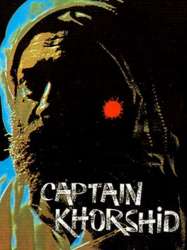
Captain Khorshid (1987)
, 1h49Origin Iran
Genres Drama, Action
Themes Seafaring films, Transport films
Actors Dariush Arjmand, Ali Nassirian, Saeed Poursamimi
Captain Khorshid is a sailor who although only having one hand, manages to sail his little boat. In his village, due to its hot climate and hard living conditions, dangerous criminals are sent into exile. They want to escape from the area, so they ask a middleman to strike a deal with Khorshid. Khorshid is asked to illegally take them out of the country with his boat. At first he is reluctant, but because of the hardships of living he accepts the job. The criminals murder one of the village's wealthiest merchants and steal the money needed for the trip. At the beginning of the journey the criminals kill the middleman, in the middle of the trip they attack Khorshid and his crewman. The crewman is killed, Khorshid faces them single-handedly. He manages to kill all the criminals, but he himself dies due to the injuries he sustained.

Kamalolmolk (1984)
Directed by Ali Hatami
Origin Iran
Genres Drama, Historical
Themes Peinture
Actors Jamshid Mashayekhi, Ezatollah Entezami, Leila Hatami, Mohammad-Ali Keshavarz, Ali Nassirian
L'histoire du film est plutôt basée sur la relation du peintre avec les divers monarques d'Iran. La distribution des rôles est surtout confiée aux acteurs iraniens les plus connus comme Jamshid Mashayekhi interprétant le peintre, et Ezzatollah Entezami qui incarne Nasseredin Shah.
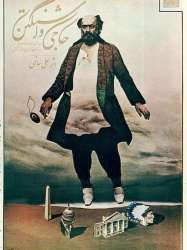
Hajji Washington (1982)
, 1h40Directed by Ali Hatami
Origin Iran
Genres Drama, Comedy, Historical
Actors Ezatollah Entezami, Richard Harrison
Hajji Hossein-Gholi Noori, an influential Qajar politician is sent by Nasereddin Shah to the United States of America during the time of President Andrew Johnson to serve as Iran's ambassador. Once in America Hajji hires a number of employees but soon finds himself missing his family and finding his work unrewarding considering there are very few Iranians in America at the time.
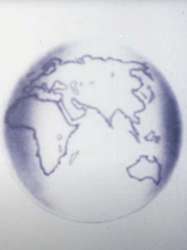
The Mad Mad Mad World (1975)
Directed by Noureddin Zarrinkelk
Origin Iran
Genres Animation
Le film met en scène un planisphère de la Terre. Sur l'air de Psyché Rock (tiré de la Messe pour le temps présent de Pierre Henry et Michel Colombier), les continents et les îles s'animent les uns après les autres en prenant la forme d'animaux variés (chiens, poules, coqs, souris, etc.), et commencent à se disputer entre eux : ils aboient, jappent, piaillent, rugissent, s'agressent, se mordent, s'entredévorent, jusqu'à ce que la planète entière soit en plein chaos. Les continents parviennent toutefois à se réconcilier à la fin.

The Traveler (1992)
, 1h10Directed by Abbas Kiarostami
Origin Iran
Genres Drama, Comedy-drama
Themes Films about children, Sports films, Association football films
Qassem Julayi (Ghāsem Jolā'i), played by Hassan Darabi, is a football-obsessed 12-year-old in the small city of Malayer, who would rather compete in the alley of his impoverished neighborhood after school than do his homework. His illiterate mother constantly berates him, but Qassem has long since learned to invent excuses for his poor school performance. In one early scene, we see him arriving late to school after going out of his way to purchase a football fan magazine. He appears with a bandage around his head, feigning a toothache. A few moments later, Qassam's skeptical teacher spots the magazine and snatches it away (only to start reading it himself). The boy resolves to travel by himself to Tehran, a 150-mile bus ride away, to attend an important game. Bus fare, however, is 10 tomans. The penniless Qassem pilfers 5 tomans that his mother has hidden, but the next day she discovers the theft and promptly reports it to the school principal, who not only berates her for raising a "monster" but canes Qassem's hands for refusing to admit guilt. That afternoon, Qassem and his friend Akbar roam the storefront vendors, attempting to sell small items to raise funds, but find no takers. The friend suggests selling an uncle's old box camera, but Qassem rejects one offer and instead hatches the scheme of pretending to take pictures of younger kids after school, collecting 5 rials for each "sitting." In a famous sequence, he issues directions to his "subjects" while snapping photo after photo with the empty camera. Onscreen, we see a succession of children posing for portraits that will never materialize. Still lacking sufficient cash, Qassem resolves to sell his team's soccer ball and goals, even though they are group property. Finally he has collected enough for his journey.

Sattar Khan (1972)
, 1h38Directed by Ali Hatami
Origin Iran
Genres Drama, Biography, Action, Historical
Actors Ezatollah Entezami, Ali Nassirian, Parviz Sayyād, Mohammad-Ali Keshavarz
Karbala Ali (Parviz Sayyad) se sauve des mains des gendarmes et au marché de Tabriz demande l’aide de Sattar Ghare Baghi (Ali Nassirian). Dans leur fugue, ils se font arrêter et fouiller par des autorités. Haydar Amo Ughloo (Ezzatollah Entezami) les libère et envoie un cadeau contenant un explosif au vice-commandant de la gendarmerie qui sera tué en l’ouvrant.
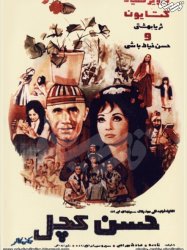
Hassan, the Bald (1970)
, 1h43Directed by Ali Hatami
Origin Iran
Genres Musical theatre, Fantasy, Adventure
Themes Films about music and musicians, Musical films
Actors Parviz Sayyād, Hamideh kheirabadi
Trompée par sa méchante belle-mère, Chelgis (Katayun), la fille du gouvernant entre dans le jardin enchanté pour y cueillir des fleurs et se faire prendre dans la sorcellerie du Div (le démon).
 Connection
Connection